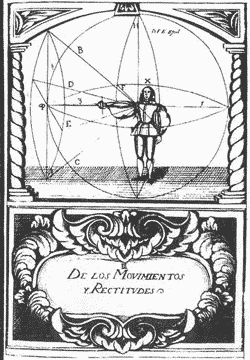
Fencing is a combat sport that features sword fighting. The three disciplines of modern fencing are the foil, the épée, and the sabre ; each discipline uses a different kind of blade, which shares the same name, and employs its own rules. Most competitive fencers specialize in one discipline. The modern sport gained prominence near the end of the 19th century and is based on the traditional skill set of swordsmanship. The Italian school altered the historical European martial art of classical fencing, and the French school later refined that system. Scoring points in a fencing competition is done by making contact with an opponent.

A rapier or espada ropera is a type of sword with a slender and sharply-pointed two-edged blade that was popular in Western Europe, both for civilian use and as a military side arm, throughout the 16th and 17th centuries.

A parry is a fencing bladework maneuver intended to deflect or block an incoming attack.

Academic fencing or Mensur is the traditional kind of fencing practiced by some student corporations in Germany, Austria, Switzerland, Latvia, Estonia, and, to a minor extent, in Belgium, Lithuania, and Poland. It is a traditional, strictly regulated épée fight between two male members of different fraternities with sharp weapons. The German technical term Mensur in the 16th century referred to the specified distance between each of the fencers.

The épée, sometimes spelled epee in English, is the largest and heaviest of the three weapons used in the sport of fencing. The modern épée derives from the 19th-century épée de combat, a weapon which itself derives from the French small sword.

The German school of fencing is a system of combat taught in the Holy Roman Empire during the Late Medieval, German Renaissance, and Early Modern periods. It is described in the contemporary Fechtbücher written at the time. The geographical center of this tradition was in what is now Southern Germany including Augsburg, Frankfurt, and Nuremberg. During the period in which it was taught, it was known as the Kunst des Fechtens, or the "Art of Fighting". The German school of fencing focuses primarily on the use of the two-handed longsword; it also describes the use of many other weapons, including polearms, medieval daggers, messers, and the staff, as well as describing mounted combat and unarmed grappling (ringen).
The remise is a renewal of an attack in fencing. It is performed when one fencer's attack has failed, either because their opponent has parried or they missed. If the attacker immediately continues their attack in the same line, they have executed a remise. The name also is applied to repetitions of other actions which did not initially succeed. The remise is at the bottom of actions in taking priority.
Classical fencing is the style of fencing as it existed during the 19th and early 20th centuries. According to the 19th-century fencing master Louis Rondelle,
A classical fencer is supposed to be one who observes a fine position, whose attacks are fully developed, whose hits are marvelously accurate, his parries firm, and his ripostes executed with precision. One must not forget that this regularity is not possible unless the adversary is a party to it. It is a conventional bout, which consists of parries, attacks, and returns, all rhyming together.

The sabre is one of the three disciplines of modern fencing. The sabre weapon is for thrusting and cutting with both the cutting edge and the back of the blade.

Fencing – family of combat sports using bladed weapons. Fencing is one of four sports which have been featured at every one of the modern Olympic Games. Also known as modern fencing to distinguish it from historical fencing.

In fencing, an attack is "the initial offensive action made by extending the arm and continuously threatening the opponent's target". In order for an attack to be awarded successfully, the fencer must accelerate their hand towards the target. If the fencer does not accelerate the hand, this is a preparation.
Rapier Combat is a style of historical fencing practiced in the Society for Creative Anachronism (SCA). The primary focus is to study, replicate and compete with styles of rapier sword-fighting found in Europe during the Renaissance period, using blunted steel swords and a variety of off-hand defensive items. Participants wear period clothing while competing, along with or incorporating protective equipment for safety. In the April 2020 update of the rules, the sport was renamed 'Fencing Combat'.

The known history of fencing in France begins in the 16th century, with the adoption of Italian styles of fencing.
Priority or right of way is the decision criterion used in foil and sabre fencing to determine which fencer receives the touch, or point, when both fencers land a hit within the same short time-frame. After this window, if one fencer had already landed a hit, the electrical scoring apparatus would "lock-out," or fail to record, an opponent's subsequent hit, and thus the one fencer to land a hit is awarded the touch. In épée fencing, if both fencers land valid hits at the same time, they each receive a point. Because of this, foil and saber are considered conventional weapons. After a halt, a referee parses what happened into actions, from which it can be determined whether to award a point or not.

Canne de combat is a French combat sport. As weapon, it uses a canne or cane designed for fighting. Canne de combat was standardized in the 1970s for sporting competition by Maurice Sarry. The canne is very light, made of chestnut wood and slightly tapered. A padded suit and a fencing mask are worn for protection.
Fencing practice and techniques of modern competitive fencing are governed by the Fédération Internationale d'Escrime (FIE), though they developed from conventions developed in 18th- and 19th-century Europe to govern fencing as a martial art and a gentlemanly pursuit. The modern weapons for sport fencing are the foil, épée, and sabre.
The oldest surviving manual on western swordsmanship dates back to the 14th century, although historical references date fencing schools back to the 12th century.

Tactics are very important to playing well in modern fencing and although technique is important in the sport, using an array of tactics will help fencers make the most of that technique.

La Verdadera Destreza is the conventional term for the Spanish tradition of fencing of the early modern period. The word destreza literally translates to 'dexterity' or 'skill, ability', and thus la verdadera destreza to 'the true skill' or 'the true art'.
This is a glossary of terms used in fencing.














